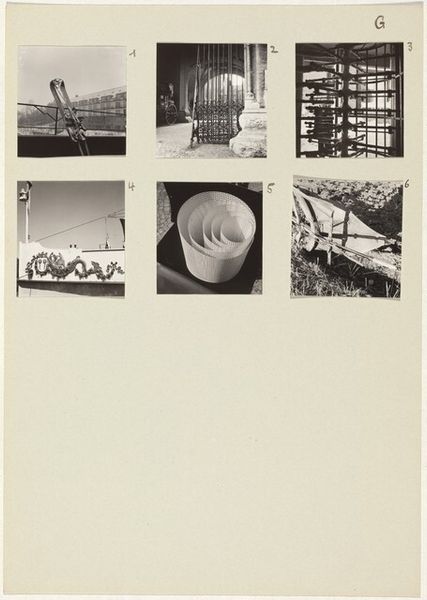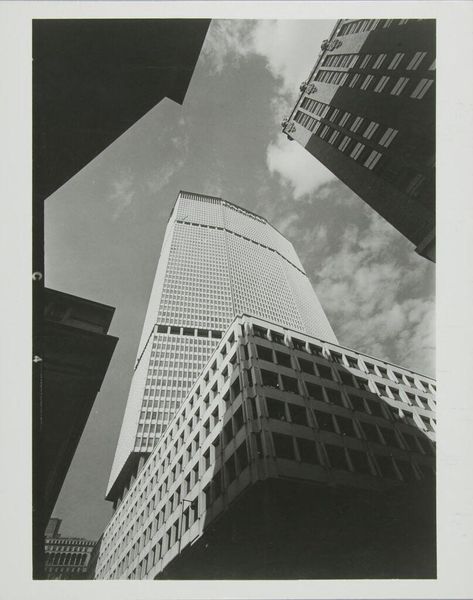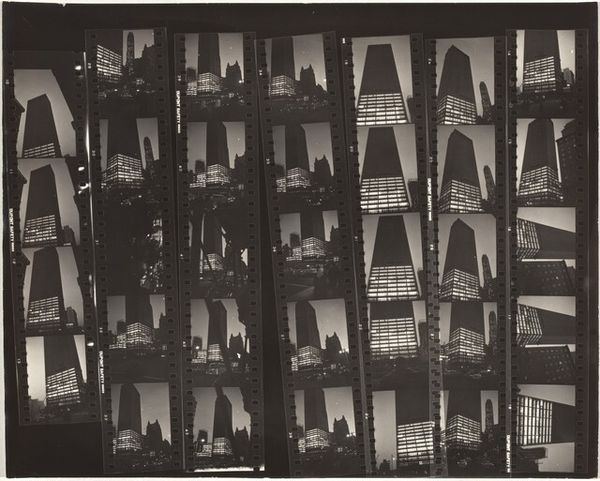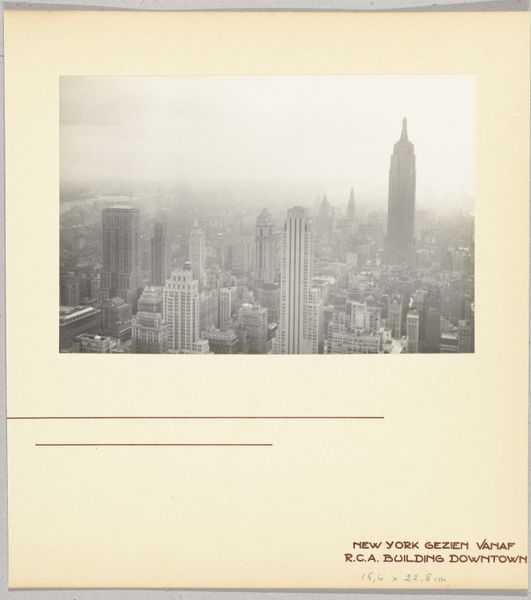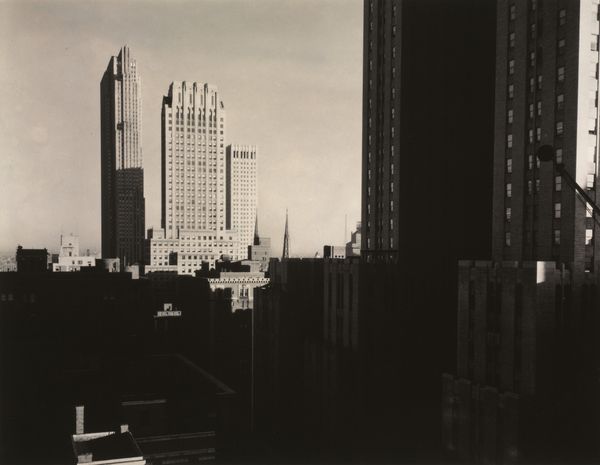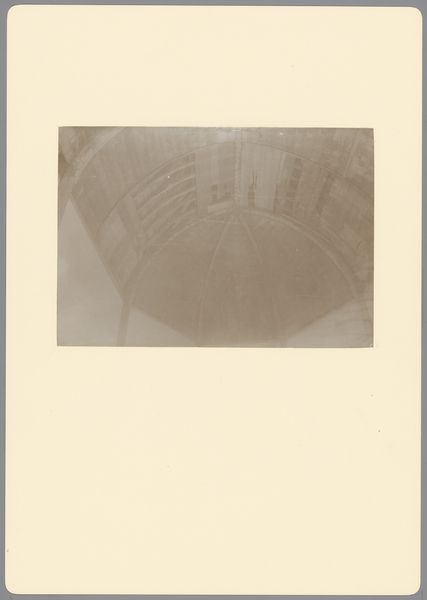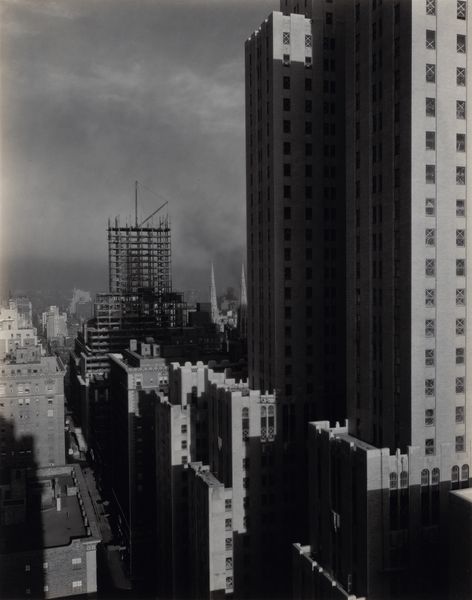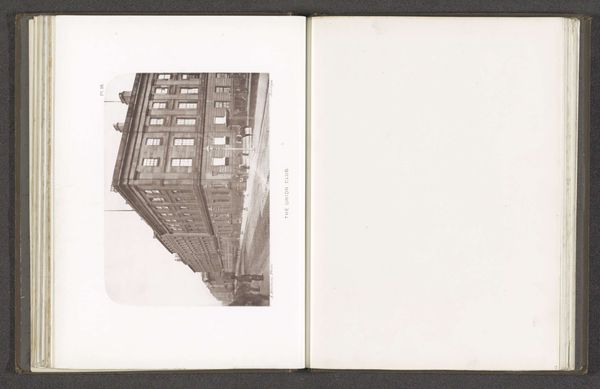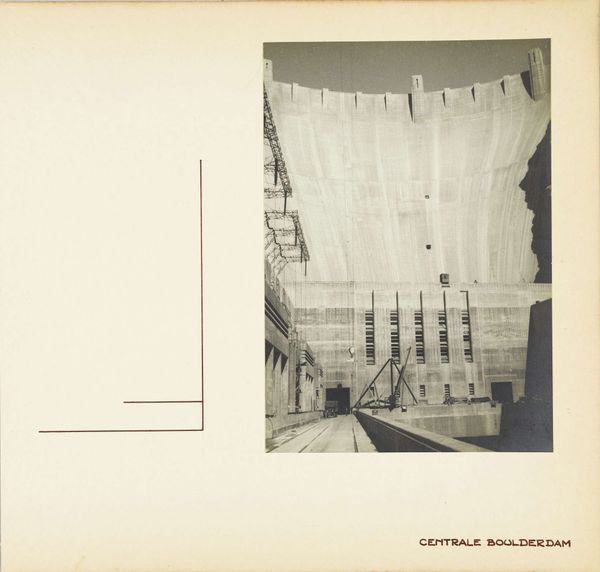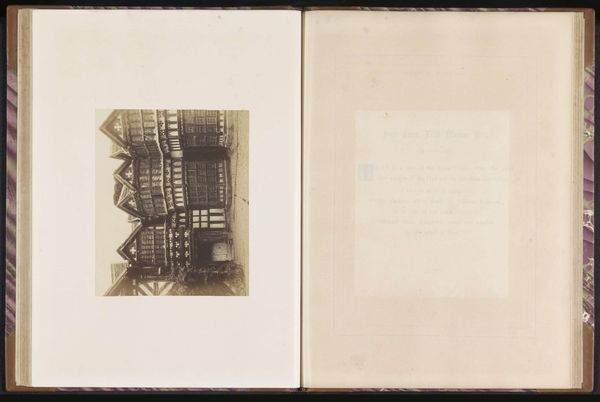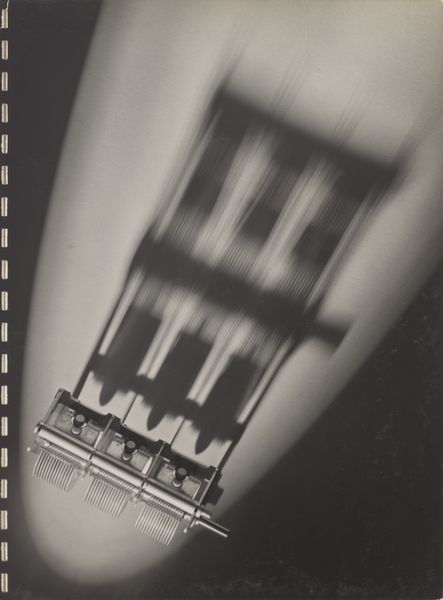
photography, architecture
#
photography
#
geometric
#
cityscape
#
modernism
#
architecture
Dimensions: height 177 mm, width 174 mm, height 315 mm, width 263 mm
Copyright: Rijks Museum: Open Domain
Curator: Here we have a photograph titled "Flatgebouw van Ludwig Mies van der Rohe, Chicago," dating circa 1971. The artist is listed as Iohan Quirijn van Regteren Altena, and the medium is photography, capturing architecture in a cityscape setting. Editor: It's so stark, almost brutal in its geometry. The high-contrast monochrome lends the buildings a real sense of detachment, towering above everything. Curator: Indeed. Notice how the composition emphasizes the verticality and repetitive forms. The buildings' geometric shapes – the cylinders and the sharp rectangular prism – dictate a rigid order. The image is structured around line and shape above all else. Editor: Yet that order masks a more complex narrative, doesn’t it? These buildings, likely residential, embody a very particular approach to urban living, particularly within a post-war modernist project that was largely based on segregation and social control through architecture. Who truly benefits from this imposed sense of order? Curator: An intriguing point. Still, I'm drawn to how Altena utilizes light and shadow to define the surfaces. The subtle gradations across the cylindrical forms offer a sense of depth and texture despite the inherent flatness of the photograph. It emphasizes the formal beauty inherent in functional architecture. Editor: But is that beauty separate from its social and economic implications? Aren't we obliged to question how these 'functional' forms alter cityscapes and lives and communities? There’s a sterile quality here, evocative of a city designed more for efficiency than for human interaction. Curator: I suppose we're both responding to the inherent ambiguities present. Is it celebration or critique? Altena's technical choices open us up to a discourse about functionality versus alienation and the artist's capacity to capture the stark grandeur of modernism’s vision in the mid-20th century. Editor: Precisely. It serves as a fascinating lens through which we can dissect the dreams and realities embedded within our urban environments.
Comments
No comments
Be the first to comment and join the conversation on the ultimate creative platform.


